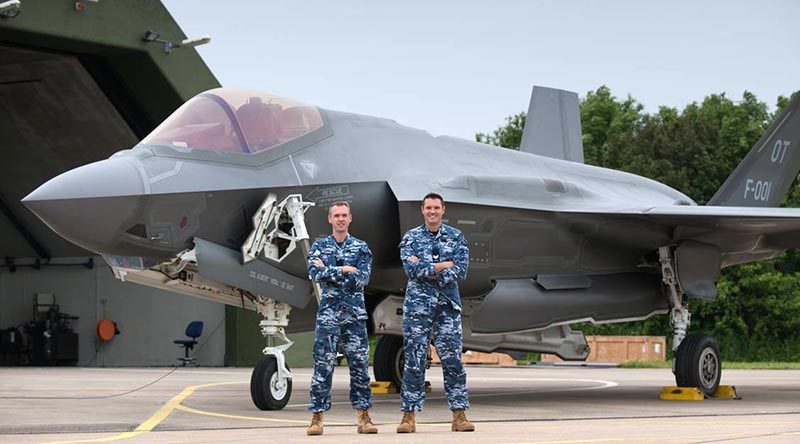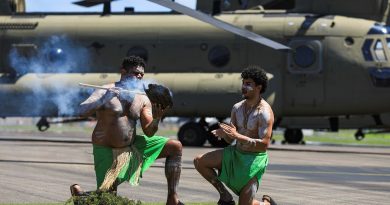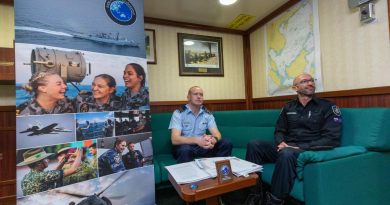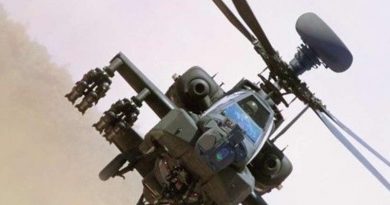Two Aussies on F-35 international deployment

Two Royal Australian Air Force members on posting to the Joint Strike Fighter Operational Test Team (JOTT) located at Edwards Air Force Base in the United States were part of the team that assessed an international F-35 deployment when they accompanied the Royal Netherlands Air Force (RNLAF) on their deployment to the Netherlands earlier this month.
Flight Lieutenant Ben Mason and Sergeant Justin Kelly are two of 33 Australian personnel working full time in the US representing Australia’s interests in the global F-35 Program.
The role undertaken by FLTLT Mason and SGT Kelly in the JOTT is to test the F-35 air system in an operationally representative environment, the outcomes of which are critical to informing Australia on how best to support the F-35A aircraft.
While they have been involved in other F-35 deployments with the US Air Force (USAF) and the US Marine Corps (USMC) during their time at the JOTT, the Netherlands deployment was the first opportunity to assess an international F-35A deployment.
SGT Kelly, a Maintenance Subject Matter Expert (SME), said his position in the JOTT enabled Australia to have an influential voice in the global F-35 Program.
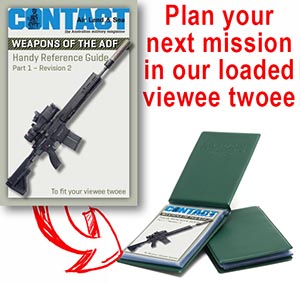 “Australia being involved in the Initial Operational Test and Evaluation (IOT&E) at Edwards AFB has given us a huge voice in the F-35 Program and a chance to drive change in a direction that suits the RAAF’s interests,” SGT Kelly said.
“Australia being involved in the Initial Operational Test and Evaluation (IOT&E) at Edwards AFB has given us a huge voice in the F-35 Program and a chance to drive change in a direction that suits the RAAF’s interests,” SGT Kelly said.
From an F-35 supportability perspective, both FLTLT Mason and SGT Kelly consider the F-35’s Autonomic Logistics Information System (ALIS) to be the defining difference to any other platform they have worked on.
“Maintaining a modern-day fighter aircraft has been done before, but using ALIS to do so is cutting edge and will revolutionise the way we maintain aircraft,” SGT Kelly said.
“ALIS provides the information system infrastructure (hardware, software and data) that performs maintenance management, fault diagnostics, supply support, mission planning, and training management across the F-35 weapon system.”
FLTLT Ben Mason, the Logistics IOT&E Coordinator, said he could see how his role directly influenced Australia’s F-35A sustainment planning.
“We’ve been able to provide insight from our experiences here to help shape the way in which Australia will use and support the aircraft, including ALIS,” FLTLT Mason said.
Air Commodore Terry Saunder, Acting Head Joint Strike Fighter Division, said the RNLAF deployment to the Netherlands was a beneficial exercise.
“Having the opportunity to observe the preparation, pack-up, deployment and reconstitution of F-35As to the Netherlands provides Australia with valuable insight as we prepare to ferry our first two aircraft to Australia in 2018.” AIRCDRE Saunder said.
“This provides great confidence and reduces the risks we are managing as we plan to integrate this new and exciting capability into the broader Defence environment.”
JOTT is a collaborative undertaking between the US, the United Kingdom, the Netherlands and Australia consisting of five operational test squadrons responsible for operating and maintaining all three variants of the F-35; plus three Integrated Project Teams who support operational test planning, execution and reporting activities.
The Australian government has approved the acquisition of 72 conventional take-off and landing F-35A aircraft to replace the ageing F/A-18A/B Hornet fleet and has taken delivery of the first two of these jets, which have accumulated more than 630 flying hours at the F-35A International Pilot Training Centre (PTC) at Luke AFB, Arizona.
Australia’s next eight aircraft will be delivered in 2018, two of which will be the first to be ferried to Australia. Six more will be temporarily based at the PTC at Luke AFB through to 2020.
.
.
.
.
.
.
.

.
.

